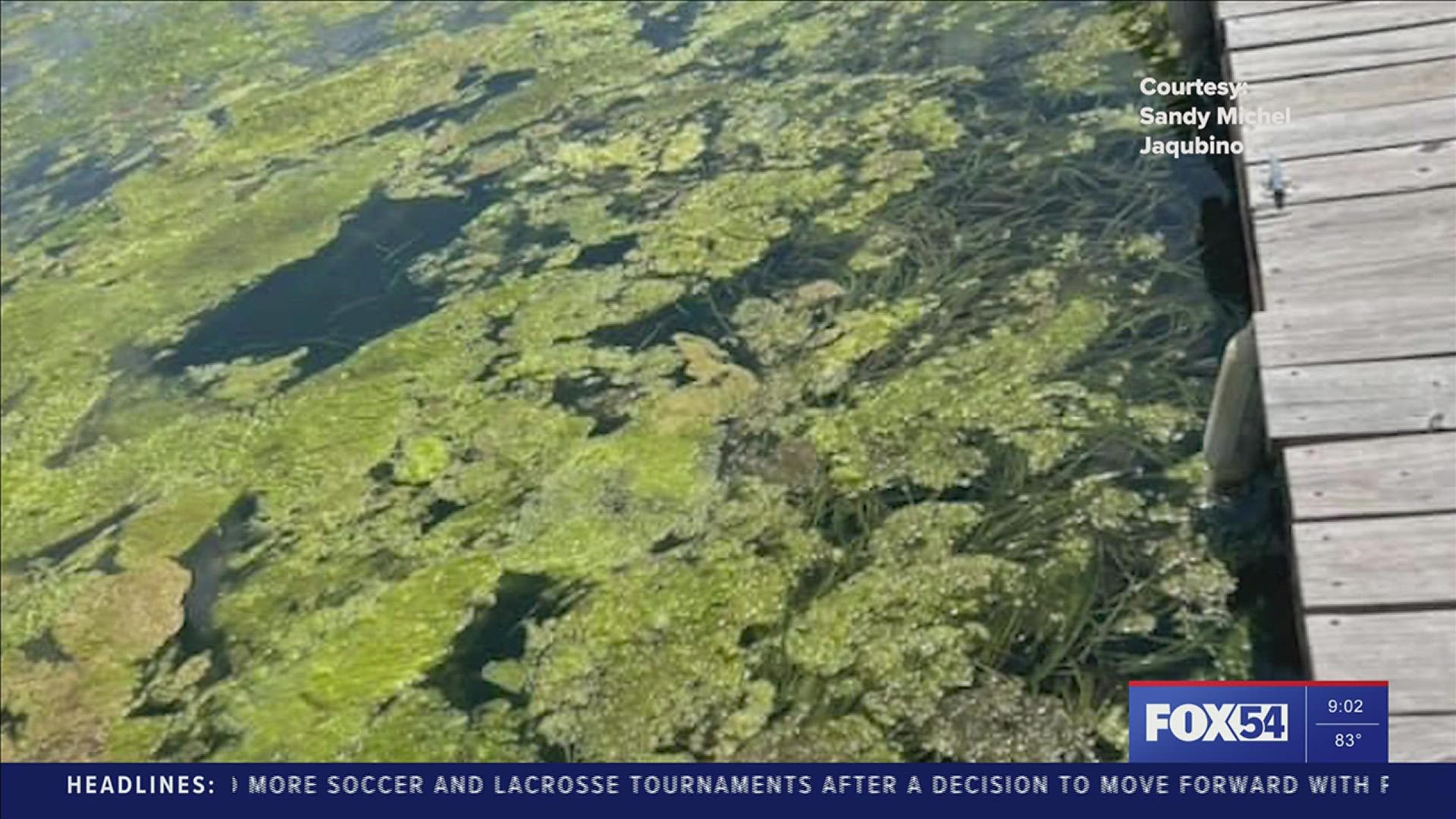HUNTSVILLE, Ala. — It's heating up and so are our lakes and freshwater systems in North Alabama. One family in Jackson County believes blue-algae may have killed their dog after a swim.
Is there a real threat? Keneisha Deas has some answers with this Verify segment.
One Facebook user in Scottsboro, Jackson County shared these pictures that’s gone viral, claiming their dog quote ‘tragically’ died after swimming in a lake near their dock.
They say the picture of the algae was two weeks ago and may have killed their beloved pet Lennox.
QUESTIONS:
So, are the pictures we see in the picture blue-green algae?
As we go swimming this summer, is there anything in lakes or freshwater that could be of danger to pets?
SOURCES:
We have Associate Professors Alan Wilson and Rusty Wright from Auburn University’s School of Fisheries, Aquaculture, and Aquatic Sciences.
ANSWER:
No, not all lakes that contain algae has toxins.
WHAT WE FOUND:
Wilson:
“We see these kinds of pictures fairly regularly in the late spring, early summer, and oftentimes it's filamentous like long stringy green algae which are harmless, and they may not look pretty but they're not blue-green algae as what you referred to earlier."
“So they're not uncommon. Typically they die when the water gets warmer, so that is something that will typically go away as the summer kind of progresses. But most systems have sign of bacteria, or blue-green algae. So it’s not uncommon to find any blue-green algae in any freshwater body; but would it be in the concentration to kill a pet? That's not clear, and we only see a picture so we encourage you to send the samples if you can, and we're happy to look at it and see if we can make a better determination."
Wright:
“They're lighter color. You can see that there were that the clumps were starting to break down and they were kind of getting brownish, bleached out. That's very typical of a filamentous algae that's dying. Which is common, right now.”
Here’s what else you should look out for:
Wright:
"If you see a thick surface of algae where you take your finger, you run through the water, and it leaves a trail behind it. Now wash your finger afterward, but basically, you know that that's algae kind of more than likely going to be algae on the surface like that. Okay, then I'd be careful allowing something to swim and that probably would rinse the dog off when they got out of the water. That kind of thing because, you know, seems like dogs are somewhat more susceptible because they lick themselves clean when they get out of the water."
Scientists also want you to keep this in mind about algae in freshwater.
“There's some of those that can potentially produce toxins but just because it's long, stringy algae doesn't necessarily mean that it's toxic. It may not look pretty, but it doesn't necessarily mean that it's toxic and even if it was potentially toxin-producing blue-green algae, it doesn't mean that they are producing toxins. And so that's where things get messy.”
If you see something suspicious in your nearby lake or freshwater that you think could be a danger to your pet, visit this website. Remember, try to do it as soon as you can because what you see, may disappear.

